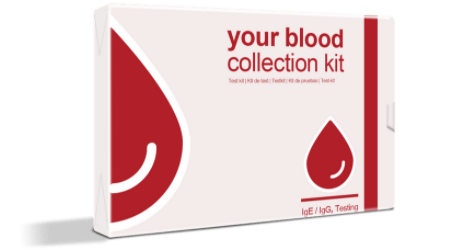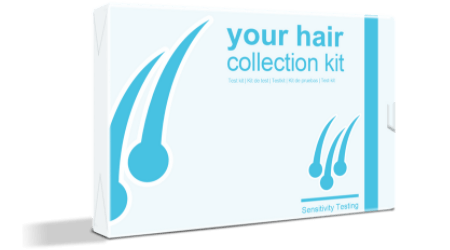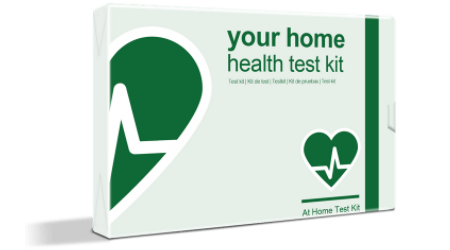Bananas are popular for breakfast, snacks, and other meals of the day. They are sweet and healthy. Bananas are also known to be the most common solids introduced to kids when they first start weaning. Most of the time, kids tolerate bananas well at a young age. Banana allergy commonly develops in adulthood.
A rare banana allergy is often tied to other foods or latex allergies. The proteins in bananas that cause an allergic reaction are the same proteins present in latex. So, if you have a latex allergy, you may also have a banana allergy. The syndrome tying banana and latex allergy is known as a latex-fodd syndrome or latex-fruit allergy.
How common is a banana allergyy
Banana allergy is relatively uncommon, and studies show its prevalence is less than 1% of the general population. Even though occurrence in infants is rare, there have been few reports. Since food allergies often cause anaphylaxis in children, you need to be vigilant when introducing new foods to them.
Children with nut allergies can react to touching raw bananas. However, children having food allergies isn’t dire since most of them outgrow these food allergies as they move into their teenage years. However, acquiring a food allergy later in life means it’s here to stay.
Banana allergy and cross-reactivity
Banana allergy is rarely an isolated disorder due to cross-reactivity with other allergens. It’s common to have a banana allergy and other food allergies. Additionally, most banana allergy patients have shown an association with pollen and latex allergy. However, depending on pollen and latex exposure, pollen or latex allergy associations vary among individuals. To know if you suffer from these allergies too, you’ll need an Allergy Test.
Latex and banana allergy
The milky sap of the Hevea brasiliensis tree is what we know as latex. When this sap is processed, it’s used to manufacture products, including condoms, gloves, and balloons. Latex allergy over the years has increased in frequency, and most of its incidences induce severe reactions.
Around 50% of people with latex allergy also have an allergy to bananas, kiwis, avocados, and chestnuts. This condition is referred to as latex-fruit syndrome. Its occurrence is due to the shared allergens in these fruits and latex.
Few people have latex allergy upon birth, but most develop it due to exposure. You’ll often find that people will have an increased risk of late allergy, including those working in the latex industry, fields, and babies with conditions requiring multiple surgeries, including doctors wearing latex gloves.
Common latex allergy symptoms include itchiness, redness, and local swelling. Some people even react to the powder in latex gloves without touching it. It’s also interesting to observe that the allergic factors in bananas are sometimes present due to their ripening chemicals. That’s why sometimes you’ll find that people allergic to bananas can eat them when cooked since those allergens have been destroyed by heat.
Banana allergy and pollen allergy
There have been reports of cross-reactivity between bananas and pollen allergies. The same colours for other fruits in relation to pollen allergies. So, it’s common to find that people with allergic rhinitis or hay fever react to bananas. However, this is often not a true allergy but an oral allergy syndrome.
Oral allergy syndrome means one will experience swelling and redness in the mouth, face, lips, and tongue. Upon rinsing out one’s mouth, these symptoms tend to fade away. The connectivity between pollen allergy and fruits or vegetables often occurs in older children, adults, and teens. It’s pretty uncommon amongst young babies and toddlers.
Risk factors of banana allergy
Food allergy starts in your body’s immune system. The exact cause for allergies is, however, unknown. However, certain factors could increase your risk of suffering from banana allergy. These include:
- Family history: If you have a close relative with food allergies, asthma, eczema, or pollen allergy, you’re at a higher risk of suffering from other allergies or similar ones. Specific food allergies can differ from one family to the next.
- Other illnesses: When you’re suffering from other allergies, it’s common to develop food allergies. Also, conditions such as eczema can increase your risk for food allergies.
- Latex allergy: Since natural latex and bananas have similar proteins, it’s common for those with latex allergies to develop banana allergies, among other fruit allergies. Other fruits linked to latex allergy include avocado, chestnut, and kiwi.
Banana allergy symptoms
Banana allergy symptoms can appear within minutes or seconds of exposure. These symptoms can also vary from one person to the next. Common symptoms include:
- Itchiness in the mouth, skin, and throat
- Hives
- Swelling of the lips, skin, and tongue

- Diarrhoea
- Nausea
- Vomiting
- Abdominal pain
- Sneezing
- Itchy eyes
- Difficulty swallowing
- Anaphylaxis
The complications of banana allergy include life-threatening anaphylaxis. Common anaphylaxis symptoms include swollen throat, horse voice, fainting, blood pressure drop, dizziness, and impending doom. If you experience these symptoms, you need immediate medical attention.
Banana allergy treatment
There is currently no cure for banana allergy. However, lifestyle and diet changes can help you manage this allergy. If you have an allergy to bananas, you need to do your best to avoid these fruits at any cost in your diet. Always ask for ingredients when you eat out, and don’t let anyone make your smoothie without explaining your allergy to prevent cross-contamination or accidental ingestion.
In case of accidental ingestion of bananas, you can take over-the-counter antihistamines if you have a mild reaction. However, if you have a severe reaction (anaphylaxis), you need to get urgent care immediately.
Anyone with allergies always has an EpiPen to deliver adrenaline and stop the symptoms of anaphylaxis. You can use an EpiPen on yourself or have someone else administer it. Either way, you’ll need to visit the emergency room for a few hours of observation in case the symptoms of an allergy require, which they sometimes do after a few hours.
Things to avoid with a banana allergy
- Avoid anything that contains bananas or even banana flavouring.
- Avoid toys and pacifiers with latex if your kid has an allergy to bananas
- Check the ingredients of your shampoo and lotions to avoid bananas as an ingredient.
- Avoid cross-reactive foods like kiwi, chestnut, avocado, apples, carrots, tomatoes, papaya, potatoes, celery, and melon.
- Double-check the ingredients in your smoothies and desserts.
Final thoughts
A banana allergy is rare and only occurs in a small percentage of the general population. If you think you may have a banana allergy, it’s essential to get an Allergy Test, which will help you know whether you only have a banana allergy or an allergy to other items and foods, too. You will also need to forego latex-containing products and read labels to avoid getting items with bananas as an ingredient.



